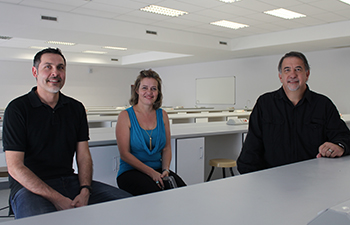Latest News Archive
Please select Category, Year, and then Month to display items
27 December 2021
|
Story Jóhann Thormählen
|
Photo Supplied
 The Kovsie Annerie Dercksen is one of South Africa’s most promising youngsters and climbing the cricketing ladder.
The Kovsie Annerie Dercksen is one of South Africa’s most promising youngsters and climbing the cricketing ladder.
She enjoyed every second of playing with some of her heroes and believes the exposure to international cricket will help her become a better player.
Annerie Dercksen is one of South Africa’s most promising youngsters and climbing the cricketing ladder.
Star from Beaufort West
This second-year Education student from the University of the Free State (UFS), who dreams of playing for the Momentum Proteas, represented the South African Emerging Women’s team three times in 2021.
The star from Beaufort West toured with the side to Bangladesh and also played against Zimbabwe and Thailand in One Day and T20 matches.
According to Dercksen, it is an incredible honour and privilege to be a part of a side.
She soaked up the experience and says everyone was willing to share their knowledge.
“I would have to say, sharing the field with some of my heroes and getting to work with some of the best coaches in the country are some of the highlights.”
She says each tour brought its own challenges and this helped her grow in the way she views and approaches the game.
“In Bangladesh we played against a well-established team in foreign conditions while facing a lot of spinners in spin friendly conditions. Personally, it was quite a challenge and I had to come back and work on some options, especially against spin.”
“Each tour brought its own challenges and this helped me grow in the way I view and approach the game.” - Annerie Dercksen
Coming through the ranks
The all-rounder has come through the ranks. She represented South-Western Districts at school level, played for the South African U19 side and is currently representing the Free State.
But Dercksen didn’t always dream cricket, especially not when playing ‘backyard’ cricket with her brother on the farm.
She didn’t even play for a team at school. “Until a boy from our primary school’s team got sick before a game. A teacher came to class and asked, ‘who can play cricket’, and I put up my hand.”
Oxford professor unlocks secrets of DNA
2017-03-31

From left are: Dr Cristian Capelli, Associate Professor
of Human Evolution at Oxford University;
Dr Karen Ehlers, Senior Lecturer and Prof Paul Grobler,
both from the Department of Genetics at the UFS.
Photo: Siobhan Canavan
Many people are interested to know more about their history and origins, and with the help of genetics, it is possible to provide more information about one’s roots.
During a lecture at the Department of Genetics at the University of the Free State (UFS), Dr Cristian Capelli, Associate Professor of Human Evolution at Oxford University in the UK, addressed staff members and students on the history of our species.
Reconstructing the history of human population
With his research, titled: People on the move: population structure and gene-flow in Southern Africa, Dr Capelli looks at reconstructing the history of human populations, focusing mainly on how the different human populations are related, as well as how they exchange genes.
He said this research could be of great significance to the medical field too. “Knowing what the genetic make-up of individuals is, can give us some information about their susceptibility to diseases, or how they would react to a given medicine. Therefore, this knowledge can be used to inform health-related policies.”
Combining individual histories of multiple people
To understand this research more clearly, Dr Capelli explained it in terms of DNA and how every individual receives half of their DNA from their mother and half from their father just as their parents had received theirs from their parents. And so it goes from generation after generation. Each individual stores a part of their ancestors’ DNA which makes up the individual genetic history of each person.
“If we combine these individual histories by looking at the DNA of multiple people, we can identify the occurrences that are shared across individuals and therefore reconstruct the history of a population, and in the same way on a larger scale, the history of our own species, homo sapiens.